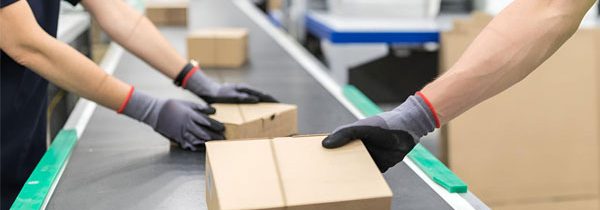Where Fulfillment Centers Lose Money, One Box at a Time
Guest blog by MHI Member Paccurate
In fulfillment, small inefficiencies don’t stay small. Something as simple as using the wrong size box for an order may seem minor, but across tens of thousands of shipments, it adds up fast. At packout, those small misses drive inflated transportation costs, one of the largest expenses for shippers. And yet, packaging optimization continues to quietly drain profits while remaining overlooked.
Poor packing decisions don’t just increase freight spend. They also drive up damage rates and returns, triggering expensive reverse logistics. For high-volume operations, that means millions in avoidable costs every year.
So why does this persist in an industry known for operational excellence? Because packaging complexity has outpaced traditional solutions.
When Simple Solutions Meet Complex Problems
Most operations still rely on packing logic built for a different era. Many WMS platforms use “liquid fill” cartonization, calculating the total volume of an order and selecting a container that technically fits, but can tend to be grossly inaccurate. Others depend entirely on associate experience and tribal knowledge.
These methods worked fine when order profiles were predictable: single-SKU shipments, consistent product dimensions, and straightforward handling. However, this is not today’s reality.
Modern shipments include products with drastically different shapes, fragility considerations, and packing requirements. For example, a box with kitchen utensils and ceramic bowls needs entirely different logic than one packed with the same volume of books. Yet most systems treat them the same.
The consequences are piling up: oversized containers, excessive void fill, and increased damage. With economic turbulence and rising transportation costs, these inefficiencies now come with intense financial penalties at a time when every dollar counts.
The Human Factor at Pack Stations
Packing decisions happen fast and under pressure. Associates are expected to optimize for weight distribution, item-specific constraints, and space efficiency while meeting aggressive throughput targets.
When the first box doesn’t work, repacking creates delays. To avoid this problem entirely, associates often reach for oversized containers. It’s not laziness. It’s a rational response to a system that rewards speed over precision.
This isn’t a training issue. It’s a systemic one. The complexity of modern pack decisions has outgrown the tools and processes supporting them.
The Data Problem
At the heart of the inefficiency is a data gap. Many operations still don’t have accurate dimensional data for their full SKU catalog, including those with advanced automation or modern WMS setups.
Without precise measurements, even the most advanced packing algorithms can’t generate accurate packing instructions. Associates are left to guess, which leads to the same pattern of oversized boxes, underused space, and avoidable waste.
And it’s not just about collecting data once. Product dimensions change due to supplier updates, new packaging, or seasonal variations. Maintaining accuracy requires an ongoing effort that many teams haven’t prioritized.
The Box Suite Problem
Another source of inefficiency is the box mix itself. Many operations are still using box, bag, and mailer selections that were determined years ago based on outdated product lines or supplier constraints. In multi-site operations, different facilities often use entirely different sets of containers, even when shipping similar products.
This leads to inconsistent packing, more waste, and missed opportunities for streamlining processes across your network. Optimizing your box suite based on actual shipping data can reduce total packaging and transportation costs significantly. But most teams don’t have the tools to test and measure the impact of changes, so the suite stays the same.
Why Now Is the Time to Fix It
We know why the problem exists. Here’s why it’s time to fix it.
Packaging inefficiencies are becoming more expensive by the day. Carriers are raising surcharges and hidden fees at an unprecedented rate. Dimensional weight pricing continues to punish poor volume utilization. And EU sustainability regulations are making their way to the U.S., bringing stricter rules on packaging waste.
Customer expectations are evolving, too. Today’s buyers expect brands to care about sustainability, and Gen Z especially isn’t shy about calling it out when they don’t. Social media is filled with examples of excessive packaging, and those posts shape brand perception and loyalty. A bad unboxing experience can cost you more than just one customer.
Packing is no longer just an operational task. It’s a critical function that requires focus.
Closing the Packing Gap
The material handling industry has always solved significant challenges with data and technology. Packing should be no different. Operations need to develop a strategy for the packing portion of fulfillment, not a series of one-off decisions. This includes connecting dimensional data, upgrading cartonization logic, and optimizing your box suite in a way that’s repeatable, measurable, and scalable.
The operations teams capitalizing on implementing a modern packing strategy are seeing measurable gains: lower freight spend, increased throughput, sustainability improvements, and happier customers. As pressure grows and expectations rise, packaging efficiency will become a key differentiator among top-performing operations.





